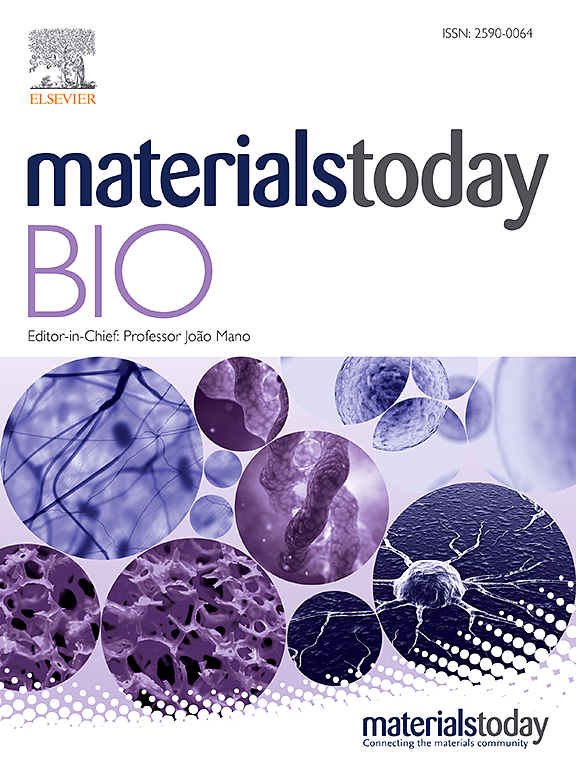高流动性网络水凝胶微球系统,以对抗软骨细胞衰老,增强软骨修复和再生
IF 10.2
1区 医学
Q1 ENGINEERING, BIOMEDICAL
引用次数: 0
摘要
细胞衰老在各种疾病的进展中起着至关重要的作用,靶向衰老是骨关节炎(OA)的潜在治疗策略。然而,软骨细胞周围复杂的生物力学环境显著影响其衰老过程。目前,很少有生物材料具有调节压力和对抗软骨细胞衰老的能力。在本研究中,我们以阳离子脂质体为核心,通过亚胺键连接水凝胶网络的交联结构,构建了高迁移率的网状水凝胶微球体系(Res@Lipo@HMs)。脂质体的可变形性赋予了水凝胶网络交联结构的移动性。该系统不仅通过滚动机制增强关节润滑,而且通过增加微球的弹性变形能力将机械应力分布在软骨细胞上。此外,该方法通过增强线粒体功能和抑制衰老途径,延缓软骨细胞衰老,改善软骨细胞生理功能,减缓OA进展。这项研究为软骨细胞治疗的抗衰老策略提供了新的见解。本文章由计算机程序翻译,如有差异,请以英文原文为准。

High-mobility network hydrogel microsphere system to combat chondrocyte senescence for enhanced cartilage repair and regeneration
Cellular senescence plays a crucial role in the progression of various diseases, and targeting senescence is a potential therapeutic strategy for osteoarthritis (OA). However, the complex biomechanical environment surrounding chondrocytes significantly affects their senescence process. Currently, few biomaterials are available that have the ability to modulate stresses and counteract chondrocyte senescence. In this study, we used cationic liposomes as the core of the crosslinked structure of the hydrogel network through imine bonding to construct a high-mobility network hydrogel microsphere system (Res@Lipo@HMs). The deformability of liposomes endowed mobility to the crosslinked structure of the hydrogel network. This system not only enhanced joint lubrication through a rolling mechanism but also distributed mechanical stress on chondrocytes by increasing the elastic deformation capacity of the microspheres. Moreover, this approach delayed chondrocyte senescence, improved chondrocyte physiological function, and slowed down OA progression by enhancing mitochondrial function and inhibiting senescence pathways. This study offers new insights into antisenescence strategies for chondrocyte therapy.
求助全文
通过发布文献求助,成功后即可免费获取论文全文。
去求助
来源期刊

Materials Today Bio
Multiple-
CiteScore
8.30
自引率
4.90%
发文量
303
审稿时长
30 days
期刊介绍:
Materials Today Bio is a multidisciplinary journal that specializes in the intersection between biology and materials science, chemistry, physics, engineering, and medicine. It covers various aspects such as the design and assembly of new structures, their interaction with biological systems, functionalization, bioimaging, therapies, and diagnostics in healthcare. The journal aims to showcase the most significant advancements and discoveries in this field. As part of the Materials Today family, Materials Today Bio provides rigorous peer review, quick decision-making, and high visibility for authors. It is indexed in Scopus, PubMed Central, Emerging Sources, Citation Index (ESCI), and Directory of Open Access Journals (DOAJ).
 求助内容:
求助内容: 应助结果提醒方式:
应助结果提醒方式:


